SuperAlp part three: from Via Alpina to the land of the Walser
Via Alpina, the ancient Walser people, new inhabitants, old and new means of transport. Searching for a real sustainability. The last of our three episodes of SuperAlp! 2013 by our reporter Simonetta Radice.
Five thousands kilometers of marked trails, five different itineraries, eight European Countries involved (from Slovenia to Italia, form Austria to Germany, from Liechtenstein to Switzerland, form France to Monaco), 342 stops-over: these are the figures of Via Alpina, an interreg project aimed at connecting the Alpine region beyond its national boarders and improving the existent network of trails. From Saint-Remy-en-Bosses we start thus our SuperAlp again and we walk for a while along the “red itinerary” – the one connecting Trieste and Monaco - entering Switzerland through the Great Saint Bernard Pass. Paolo Caligaris is responsible of the Via Alpina project for the Department of Mountains and Forests Development of the Piedmont Region - one of the administrative bodies involved in the Via Alpina - and is walking with us in this part of the journey. “The project has been signed off by all the Countries members of the Alpine Convention” he says “In facts, the Via Alpina is not merely a trekking itinerary but also a tool supporting the local development”.
The Great Saint Bernard is one of the most ancient pass connecting the Western Europe to the Po Valley, first appearing in history in the third centuries b.C. and becoming one of the most important communication route during the Roman age and the Middle Age as well. The impressive Great Saint Bernard Hospice, that you can see down the still frozen lake, dates form XI century a.C and was founded by Saint Bernard of Menthon, who established here a monastic community with the aim to help and host travelers, protecting them from the Saracens assaults. There is still a lot of snow at the pass and we walk towards Bourg Saint Pierre partly on snowfields. Form the small Swiss village we take then the bus to Orsière and the Great Sainint Bernard Express train to Martigny and Ulrichen, passing form Brig.
The Swiss Travel System is an example of efficiency at a global level and the result of a long time tradition, dating the second half of the XIX century. In 1863 Thomas Cook organized in facts the first SuperAlp ante-litteram: sixty adventurous travellers leaved from London to reach Switzerland using just trains, coaches and mules. This was only the beginning of a progressing evolution, whose result is a virtuous blend between public transportation and tourism. Today, the public transportation network covers a length of 26.000 km and Switzerland keeps the global record for passenger rail kilometers covered annually with 2310 kilometers per capita. There are about 300 public transportation companies in Switzerland that allow to travel around the Country with a single pass. Trains, ferry-boats, buses, cable cars: the Swiss Pass and the Flexi Swiss pass allow to move all around the Country choosing a given period or only a number of days per month. The pass allows to visit for free more than 400 museums and includes a series of discounts for guided tours, hotels reservations and specific discounts for people travelling in couple. For obvious reasons, mountains in Switzerland are not a marginal area. Besides the famous Glacier Express, Bernina Express and Jungfraujoch it is possible to reach also the smallest e remotest villages thanks to the 800 lines of the postal buses.
From the small Ulrichen village, we take the shuttle-bus on call heading to Neufenenpass in Bedretto valley, the second highest pass in Switzerland (2480 m). The pass connects Switzerland and the Formazza valley in Italy. A small disclaimer is due here: the Formazza Valley, as well as the whole Ossola area, is basically my homeland. Since I was a child I have been loving these remote places where you can walk for hours without meeting anyone e where the touristic industry is not so massively developed yet (with all the pros and cons related to this point). Through the San Giacomo pass we enter Val Formazza. Today, we have the pleasure to be accompanied by Pietro Sormani, president of the Formazza CAI, who tells us about the history of this pass, whose relevance is related to the commerce of cheese, wine, clothes and salt. Not far from here, the Gries Pass represents another relevant communications way between Italy and Switzerland, as it was the Walser people historic route, today part of the touristic itinerary known as Sbrinz Route. The Val Formazza history is also closely related to the one of the hydroelectric plants in Italy: in the twenties, the valley saw a massive development of this plants, that shaped the landscape and the local economy so that many pastures were abandoned. Today things are changing again and the valley has become famous for the Bettelmatt cheese, a well-known row milk cheese that is only made in seven alpine pastures in this area above the 2000 m of altitude.
In the small village of Riale where we visit the cross-country ski museum and by bike we reach the "Casa Forte Walser Museum, a massive stone building, dating back to 1569. Together with the mayor of Formazza Marina Papa, we met the potess Anna Maria Bacher who writes his poetries in Walser, an old language that is dying out in spite of the efforts of the community to teach this heritage to the younger generations. A relaxing break to the Premia Terme establishment is just what we need after this intense day, enjoying the hot water that was casually discovered during a geological evaluation in the Nineties. The place includes a wellness area as well as beautiful indoor and outdoor pools.
The last stopover of SuperAlp is Domodossola, where the closing press conference is held. After Cogne and Chamonix, Domodossola is the third place we are visiting in our tour where an information desk of the Alpin Convention is hosted, and it is managed by the association ARS.UNI.VCO. The conference gave us the opportunity to know the transnational project C3 Alps, aimed at producing knowledge about climate change adaptation and practical actions on the territory. The project gave birth to a series of pilot programs in different areas of the alpine region to create awareness different target of people (teachers, local politics, studens and so on) about the climate change effects on the different ecosystems.
The president of the association Giulio Gasperini, the president of the VCO province Massimo Nobilini and the mayor of Domodossola Mariano Cattrini are attending the conference. "Today more than ever it is important to discover again the pride of living in the Alps." the mayor says "One of biggest tragedy, nowadays, is that we are no more able to live with what our territory is providing us with. The resources we have must be enough, we have to act so that they can be enough. It's not a matter of poverty; it's a matter of self-respect. Out of this, no sustainability can exist.” I think I could not find better words to end up my travel reportage in the “Playground of Europe”.
Simonetta Radice
THE ALPINE CONVENTION
The Alpine Convention is an international treaty between the Alpine countries (Austria, France, Germany, Italy, Liechtenstein, Monaco, Slovenia and Switzerland) as well as the EU, aimed at promoting sustainable development in the Alpine area and at protecting the interests of the people living within it. It embraces the environmental, social, economic and cultural dimensions.
The Alps, with their biodiversity capital, water and wood reserves, are the natural, cultural, living and economic environment for nearly 14 million people and an attractive tourist destination for approximately 120 million guests every year.
SUPER ALP! 2013
22/07/2013 - SuperAlp second part: from Gran Paradiso to Mont Avic
15/07/2013 - SuperAlp 7: borders, ancient routes, populations and inhabitants
19/06/2013 - Super Alp! 7, the (sustainable) journey across the Alps
The Great Saint Bernard is one of the most ancient pass connecting the Western Europe to the Po Valley, first appearing in history in the third centuries b.C. and becoming one of the most important communication route during the Roman age and the Middle Age as well. The impressive Great Saint Bernard Hospice, that you can see down the still frozen lake, dates form XI century a.C and was founded by Saint Bernard of Menthon, who established here a monastic community with the aim to help and host travelers, protecting them from the Saracens assaults. There is still a lot of snow at the pass and we walk towards Bourg Saint Pierre partly on snowfields. Form the small Swiss village we take then the bus to Orsière and the Great Sainint Bernard Express train to Martigny and Ulrichen, passing form Brig.
The Swiss Travel System is an example of efficiency at a global level and the result of a long time tradition, dating the second half of the XIX century. In 1863 Thomas Cook organized in facts the first SuperAlp ante-litteram: sixty adventurous travellers leaved from London to reach Switzerland using just trains, coaches and mules. This was only the beginning of a progressing evolution, whose result is a virtuous blend between public transportation and tourism. Today, the public transportation network covers a length of 26.000 km and Switzerland keeps the global record for passenger rail kilometers covered annually with 2310 kilometers per capita. There are about 300 public transportation companies in Switzerland that allow to travel around the Country with a single pass. Trains, ferry-boats, buses, cable cars: the Swiss Pass and the Flexi Swiss pass allow to move all around the Country choosing a given period or only a number of days per month. The pass allows to visit for free more than 400 museums and includes a series of discounts for guided tours, hotels reservations and specific discounts for people travelling in couple. For obvious reasons, mountains in Switzerland are not a marginal area. Besides the famous Glacier Express, Bernina Express and Jungfraujoch it is possible to reach also the smallest e remotest villages thanks to the 800 lines of the postal buses.
From the small Ulrichen village, we take the shuttle-bus on call heading to Neufenenpass in Bedretto valley, the second highest pass in Switzerland (2480 m). The pass connects Switzerland and the Formazza valley in Italy. A small disclaimer is due here: the Formazza Valley, as well as the whole Ossola area, is basically my homeland. Since I was a child I have been loving these remote places where you can walk for hours without meeting anyone e where the touristic industry is not so massively developed yet (with all the pros and cons related to this point). Through the San Giacomo pass we enter Val Formazza. Today, we have the pleasure to be accompanied by Pietro Sormani, president of the Formazza CAI, who tells us about the history of this pass, whose relevance is related to the commerce of cheese, wine, clothes and salt. Not far from here, the Gries Pass represents another relevant communications way between Italy and Switzerland, as it was the Walser people historic route, today part of the touristic itinerary known as Sbrinz Route. The Val Formazza history is also closely related to the one of the hydroelectric plants in Italy: in the twenties, the valley saw a massive development of this plants, that shaped the landscape and the local economy so that many pastures were abandoned. Today things are changing again and the valley has become famous for the Bettelmatt cheese, a well-known row milk cheese that is only made in seven alpine pastures in this area above the 2000 m of altitude.
In the small village of Riale where we visit the cross-country ski museum and by bike we reach the "Casa Forte Walser Museum, a massive stone building, dating back to 1569. Together with the mayor of Formazza Marina Papa, we met the potess Anna Maria Bacher who writes his poetries in Walser, an old language that is dying out in spite of the efforts of the community to teach this heritage to the younger generations. A relaxing break to the Premia Terme establishment is just what we need after this intense day, enjoying the hot water that was casually discovered during a geological evaluation in the Nineties. The place includes a wellness area as well as beautiful indoor and outdoor pools.
The last stopover of SuperAlp is Domodossola, where the closing press conference is held. After Cogne and Chamonix, Domodossola is the third place we are visiting in our tour where an information desk of the Alpin Convention is hosted, and it is managed by the association ARS.UNI.VCO. The conference gave us the opportunity to know the transnational project C3 Alps, aimed at producing knowledge about climate change adaptation and practical actions on the territory. The project gave birth to a series of pilot programs in different areas of the alpine region to create awareness different target of people (teachers, local politics, studens and so on) about the climate change effects on the different ecosystems.
The president of the association Giulio Gasperini, the president of the VCO province Massimo Nobilini and the mayor of Domodossola Mariano Cattrini are attending the conference. "Today more than ever it is important to discover again the pride of living in the Alps." the mayor says "One of biggest tragedy, nowadays, is that we are no more able to live with what our territory is providing us with. The resources we have must be enough, we have to act so that they can be enough. It's not a matter of poverty; it's a matter of self-respect. Out of this, no sustainability can exist.” I think I could not find better words to end up my travel reportage in the “Playground of Europe”.
Simonetta Radice
THE ALPINE CONVENTION
The Alpine Convention is an international treaty between the Alpine countries (Austria, France, Germany, Italy, Liechtenstein, Monaco, Slovenia and Switzerland) as well as the EU, aimed at promoting sustainable development in the Alpine area and at protecting the interests of the people living within it. It embraces the environmental, social, economic and cultural dimensions.
The Alps, with their biodiversity capital, water and wood reserves, are the natural, cultural, living and economic environment for nearly 14 million people and an attractive tourist destination for approximately 120 million guests every year.
SUPER ALP! 2013
22/07/2013 - SuperAlp second part: from Gran Paradiso to Mont Avic
15/07/2013 - SuperAlp 7: borders, ancient routes, populations and inhabitants
19/06/2013 - Super Alp! 7, the (sustainable) journey across the Alps
Latest news
Expo / News
Expo / Products
The Zenith is a mountaineering axe that uniquely combines lightweight design with technical features for top-level performance.
Ferrino OSA 32, a backpack for freeriders and ski mountaineers providing maximum ergonomics and functionality.
Technical footwear for high altitude mountaineering and ice climbing.
Ocun Diamond S climbing shoes designed for maximum performance, comfort, and precision
The world’s lightest – and most technically advanced – high altitude mountaineering boots.
Petzl Irvis Hybrid crampons for ski touring and approaches involving glacier travel.


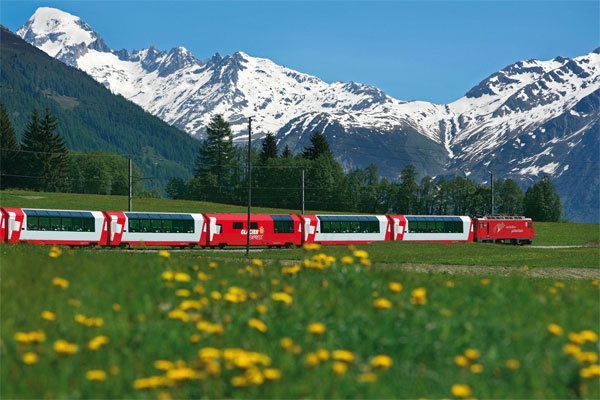
 1 / 8
1 / 8
 Copia link
Copia link

 archivio Simonetta Radice
archivio Simonetta Radice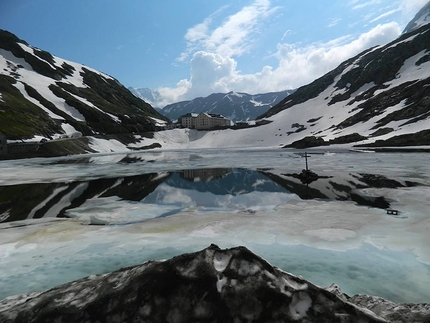
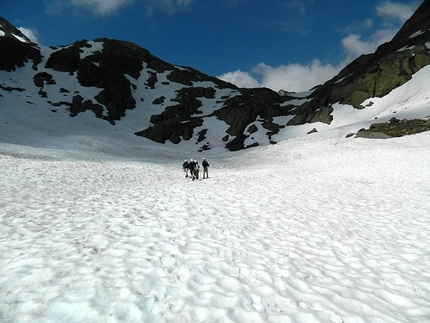
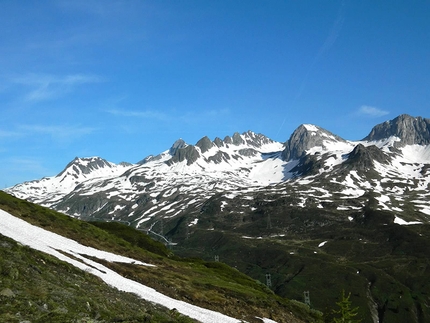
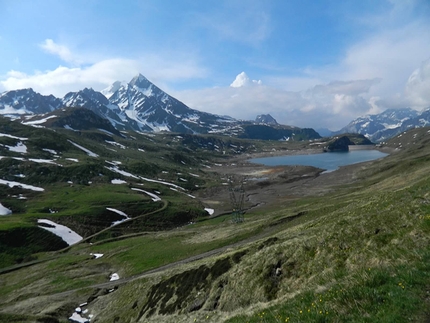
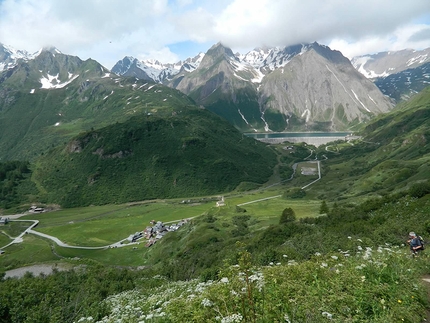
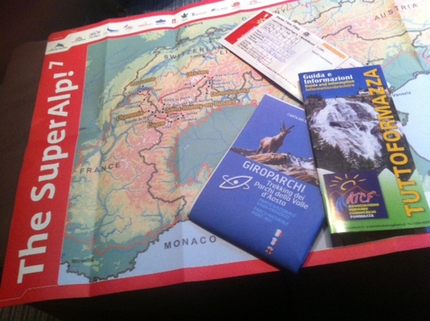
 See all photos
See all photos






















